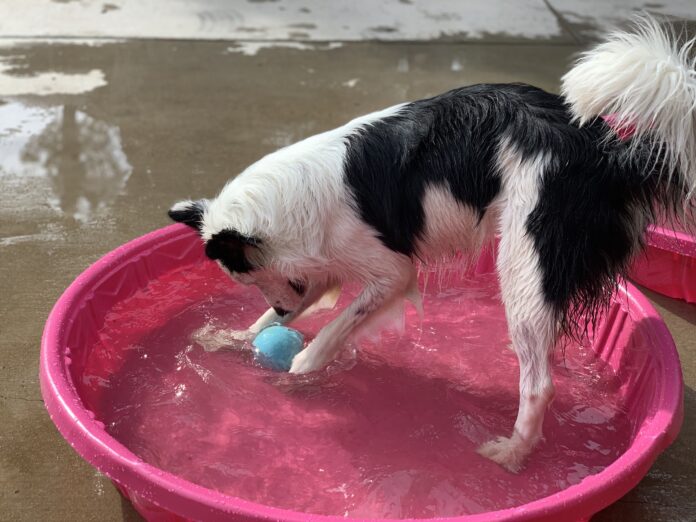BRYAN-COLLEGE STATION, July 13, 2023 — Dogs and cats who cannot be distracted from an activity, such as biting or chasing imaginary objects, may be experiencing a compulsive disorder, especially when their behavior prevents them from maintaining their daily routine.
Because compulsive disorders are a sign of mental stress and can escalate to physical harm if left untreated, owners should learn to recognize their companion animal’s compulsive behaviors and triggers and then take the time to develop a management plan unique to their pet.
Dr. Ashley Navarrette, a clinical veterinarian at the Texas A&M School of Veterinary Medicine and Biomedical Sciences, says that the best form of management owners can implement is to remove triggers or provide distractions, especially since compulsive behaviors are hard to cure.
“Oftentimes, compulsive behaviors promote altered physiology in pets, such as decreased heart rate and the release of feel-good hormones, which make it very hard to cure these behaviors, as they are self-rewarding,” Navarrette said. “These behaviors are manageable, yet it often requires a large time investment from both the owner and their veterinarian.”
When removing triggers, Navarrette emphasizes that owners should refrain from scolding pets when they behave compulsively and, instead, praise the pet for good behaviors; this is known as positive reinforcement-based training.
“Reprimanding pets is never the ideal way to go about getting the behaviors one desires,” Navarrette said. “Rather, it is best to reward dogs and cats for behaviors that are desired and redirect them to something else when they are demonstrating unwanted behaviors.”
When implementing the method of distraction to manage compulsive behaviors, Navarrette recommends that owners provide activities that offer mental and physical enrichment.
“Mental enrichment examples are things that make a pet think, including puzzle toys, search games, sniffing tasks, visual stimulation (like dog or cat TV), or training,” Navarrette said. “Physical enrichment is exactly what it sounds like: walking both cats and dogs, hiking, herding, playing fetch, or agility activities.”
Many compulsive behaviors are in response to a trigger, or stressor, so Navarrette also encourages owners to provide a relaxing environment for their pet.
“No animal should be in a constant state of stress, anxiety, or fear, so providing things that can help decrease stress and promote a ‘calm’ environment — calming music, pheromones, and familiar things like toys or beds — can manage compulsive behaviors,” Navarrette said. “A relaxing environment is unique to the animal, and each owner knows their animal the best. For example, some dogs love being surrounded by noise and people, while others prefer a calm, ‘family-only’ existence.”
While each form of management is personal to the pet, Navarrette pointed out that all pets can benefit from veterinary visits, behavioral training, and possible medications to manage compulsive behaviors.
“There are times when a pet may require medical management with the use of long-term medicine to help the pet maintain a good quality of life,” Navarrette said. “It is often a combination of behavioral modification and medication, which requires constant check-ins and adjustments until the right combination is found.”
Helping your furry friends address their compulsive disorders can be time consuming, but addressing these behaviors before they begin to affect your pet’s quality of life — and yours, too — is a worthwhile and rewarding activity for the whole family.
Pet Talk is a service of the School of Veterinary Medicine and Biomedical Sciences, Texas A&M University. Stories can be viewed on the web at vetmed.tamu.edu/news/pet-talk. Suggestions for future topics may be directed to vmbs-editor@tamu.edu.













